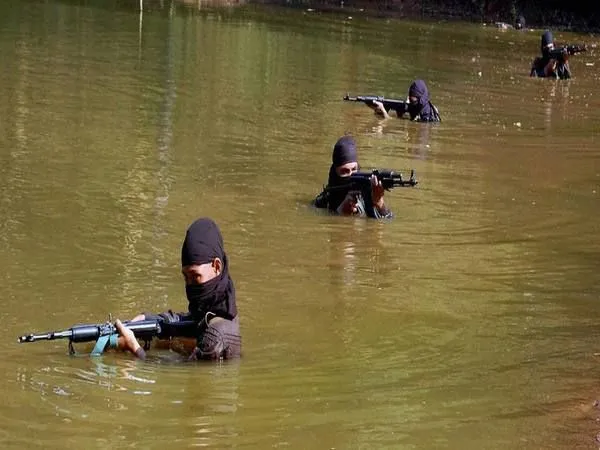

The year 2020 recorded the lowest insurgency incidents and casualties among the civilians and security forces during the last two decades.
<p>
The stats are stark. From a high of 8515 incidents between 2000-05, insurgency related incidents in the northeast have sharply dropped to just&nbsp; 847 between 2018-21.</p>
<p>
&ldquo;The year 2020 recorded the lowest insurgency incidents and casualties among the civilians and security forces during the last two decades,&rdquo; the Home Ministry&rsquo;s annual report released earlier this year said.</p>
<p>
With 2014 as the benchmark, MHA observed that there has been an &ldquo;80% reduction in insurgency incidents in 2020.&rdquo;&nbsp; It further added that among the security forces, fatalities have dropped by 75 percent. Civilian deaths have plummeted by a startling 99 per cent during this period!</p>
<p>
<img alt="" src="https://www.indianarrative.com/upload/news/WhatsApp_Image_2022-08-13_at_10.32.26_AM_(1)_(1).jpeg" style="width: 100%; height: 100%;" /></p>
<p>
<strong>How did this turnaround come about?</strong></p>
<p>
Several factors appear to have contributed to the decline in anti-state violence in the northeast to three-digit numbers.</p>
<p>
But most importantly, the adoption of&nbsp; a holistic approach that targeted the ecosystem that fed insurgency has paid rich dividends. Since many insurgent groups had sanctuaries in neghbouring countries, diplomacy had to be forcefully deployed to convince bordering countries to cooperate with&nbsp; India in its national security drive. The opening of the diplomatic channel allowed effective use of collaborative military force to break the back of insurgent groups.</p>
<p>
Bhutan set the template of the cross-border counterinsurgency drive.</p>
<p>
In 2003 it targeted and dismantled training camps of three militant groups, which were active in Assam and West Bengal.</p>
<blockquote class="twitter-tweet">
<p dir="ltr" lang="en">
Dochula pass, Bhutan, 3100m above sea level has 108 structures built in the honor of soldiers martyred in a counter insurgency operation. Credit to u/awkward_noob on Reddit <a href="https://twitter.com/hashtag/travel?src=hash&amp;ref_src=twsrc%5Etfw">#travel</a> <a href="https://twitter.com/hashtag/travelwriting?src=hash&amp;ref_src=twsrc%5Etfw">#travelwriting</a> <a href="https://t.co/A4Xme73yLw">pic.twitter.com/A4Xme73yLw</a></p>
&mdash; TravelStoriesBook (@madtravelstory) <a href="https://twitter.com/madtravelstory/status/1110629554081710081?ref_src=twsrc%5Etfw">March 26, 2019</a></blockquote>
<script async src="https://platform.twitter.com/widgets.js" charset="utf-8"></script><p>
Five years later, Bangladesh also launched an operation that turned out to be a big success. Top rebel leaders were captured and returned to India.</p>
<p>
In 2019, training camps in Myanmar&rsquo;s Sagaing Division were also famously destroyed.</p>
<p>
The stick and the carrot have gone together. Dialogue has combined the use of force. Significantly, rehabilitation of the disarmed militants has also been a top priority in the government&rsquo;s 360 degree approach.</p>
<p>
Consequently, dialogue, ceasefire, submission&nbsp; of demands have been the blueprint&nbsp; for ending internal conflict in the northeast successfully.</p>
<p>
A new rehabilitation package announced in 2008 also helped greatly. Under this scheme, a surrendered militant was granted Rs. 4 lakhs. Besides, a monthly stipend of the Rs. 6,000 has also been granted for three years, apart from vocational training for self-employment.</p>
<p>
The results of this comprehensive approach have been impressive. Last year, five militant groups from Assam signed accords with the government and slipped into the mainstream.&nbsp;</p>
<p>
While nearly 40 insurgent groups are operational in the northeast, with the largest number operating in Manipur, most are involved in a peace dialogue in the hope of arriving at a settlement. These groups include the Isak-Muivah faction of the National Socialist Council of Nagalim (NSCN-IM), faction of the United Liberation Front of Asom (ULFA) and over 20 outfits in Manipur belonging to the Kuki and Zomi communities that are engaged in talks.</p>
<p>
But seven secessionist outfits that train in Myanmar have rejected the dialogue offer, and continue to target the security forces from time to time.</p>
<p>
<strong>Also Read:</strong> <a href="https://www.indianarrative.com/india-news/northeast-india-welcomes-decision-to-lift-afspa-from-most-areas-161194.html">Northeast India welcomes decision to lift AFSPA from most areas</a></p>
India's coal imports fell by 7.9 per cent, totalling 243.62 million tonnes (MT), compared to…
At least 88 illegal Bangladeshi migrants have been traced and detained by teams of South…
Japan has accused China of conducting maritime scientific research without prior notification within its exclusive…
Indian businesses are aiming exports to the tune of USD 1 trillion in the current…
Border Security Force (BSF's) Assistant Commandant Neha Bhandari commanded a forward post along the International…
The French Ambassador for the Ocean and French President's Special Envoy for the United Nations…